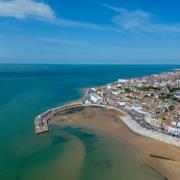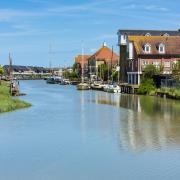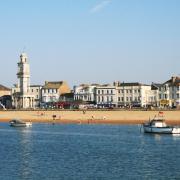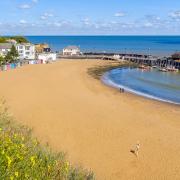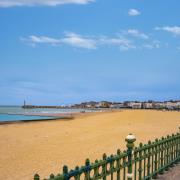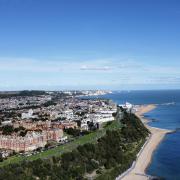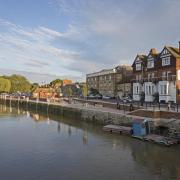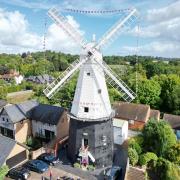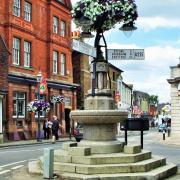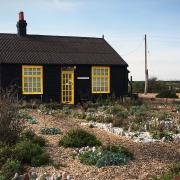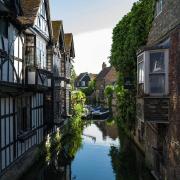2020 marks 125 years since the founding of the National Trust - and Kent has always played a huge part in its story

This year marks 125 years since the National Trust was funded by three philanthropists, intent on preserving the nation's heritage and open spaces for everyone to enjoy. Over that time, the organisation has grown into Europe's biggest conservation charity and a highly active campaigner for key issues around heritage, the arts, environmental concerns and how people connect to the natural world.
In a speech commemorating the milestone, National Trust Director General Hilary McGrady outlined ambitious goals for the charity's future. These include a commitment to become carbon net zero by 2030, plans to plant 20 million trees over 10 years in a bid to tackle climate change and a year-long campaign to connect people with nature through a series of outdoor events and related activities.
Ten per cent of the land owned by the National Trust is currently covered in woodland, and the charity has pledged to increase that figure to 17 per cent by 2030 to help it meet its net zero target and open up access to woodland to more people across the UK.

Kent's National Trust story
Kent has played a huge part in the National Trust's story to date, especially as one of its founders, Octavia Hill, lived for a time at Crockham Hill near Toys Hill on the Kent Downs.
Octavia Hill was instrumental in saving Alfriston Clergy House, the first ever property to be acquired by the National Trust. The medieval timber-framed hall house sits across the border from Kent in the neighbouring county of East Sussex and was bought in 1896 for just £10. Octavia Hill also donated part of Crockham Hill to the National Trust in 1898.
Many more acquisitions, purchases and donations have followed in Kent, encompassing country houses, formal gardens, countryside and coastlines.
Quebec House, the Georgian home of Battle of Quebec hero General James Wolfe, was another early acquisition in 1914, while Knole, the birthplace of novelist Vita Sackville West, came into the Trust's possession in 1946.
That same year, Sir Winston Churchill's beloved country retreat in Westerham was donated by a group of businessmen who purchased it in order to donate it for posterity, with the agreement that Winston and Clementine Churchill would be allowed to live there for as long as they wished.
And just over 20 years later, Vita Sackville West's world-famous Sissinghurst Castle Garden also became part of the National Trust 'family'.

Recent times
In more recent years, the National Trust has taken ownership of a diverse range of properties and land. Ightham Mote, a medieval manor house near Sevenoaks, was acquired in 1985, with South Foreland Lighthouse near the White Cliffs of Dover joining the portfolio in 1989.
Another fascinating place to explore near the White Cliffs is Fan Bay Deep Shelter, a system of tunnels constructed in 1940 to accommodate a gun battery and two sound mirrors, or early acoustic warning devices. The tunnels opened for public tours in 2015.
Just six years ago, the National Trust took over the fascinating Darnley Mausoleum in Cobham Woods. It was conceived by Georgian architect, James Wyatt and its designs were exhibited at the Royal Academy in 1783, although no one has ever been interred there.
Cobham Woods was also just one part of the swathes of woodland owned by the National Trust in Kent affected by the Great Storm of 1987 that ravaged much of the UK and altered the landscape in many places.
While the storm resulted in the loss of many trees and plants, it also offered an opportunity to research and reshape the woodlands of Kent to ensure its future as a diverse habitat and place of tranquillity for visitors to enjoy for generations to come. Thus aligning with the organisation's original aim, stated 125 years ago, to protect and preserve the nation's open spaces 'for everyone, for ever'.

To the future
2020 is an exciting time for National Trust visitors, with many events on offer. These range from the prestigious International Garden Photographer of the Year exhibition, which is running at Sissinghurst Castle Garden daily until 8 March, to Scotney Castle celebrating World Book Day on 7 and 8 March with a book-related trail and a second-hand bookshop.
Several places will be marking Mothering Sunday on and around 22 March with special meals, events and offers for mums visiting with their families.
Check out the National Trust's website for further dates and booking information. There are also many fascinating tours to enjoy, including attic tours at Knole, house tours at Chartwell and ranger-led nature walks at various countryside locations.
Find out more
For more details of events, activities and other ways to get involved with the National Trust in Kent in this special 125th anniversary year, please visit: www.nationaltrust.org.uk/kent.




